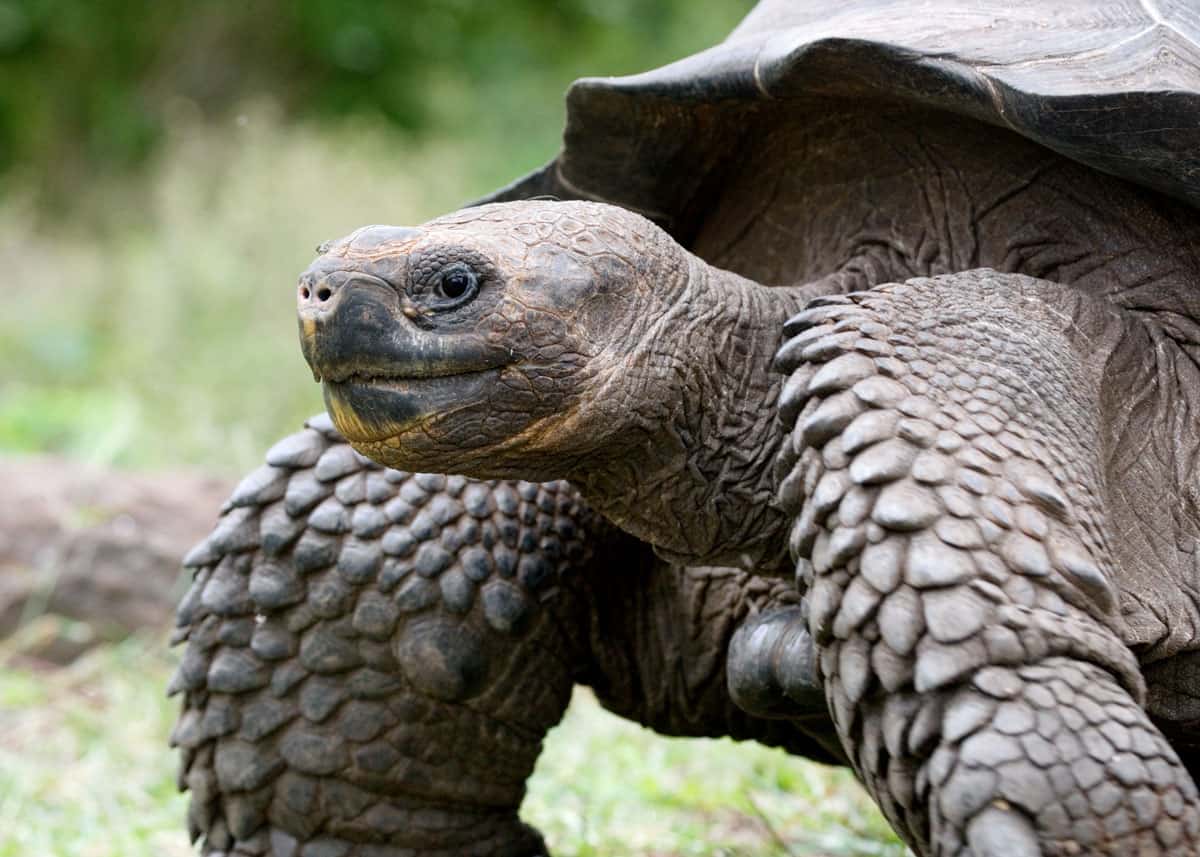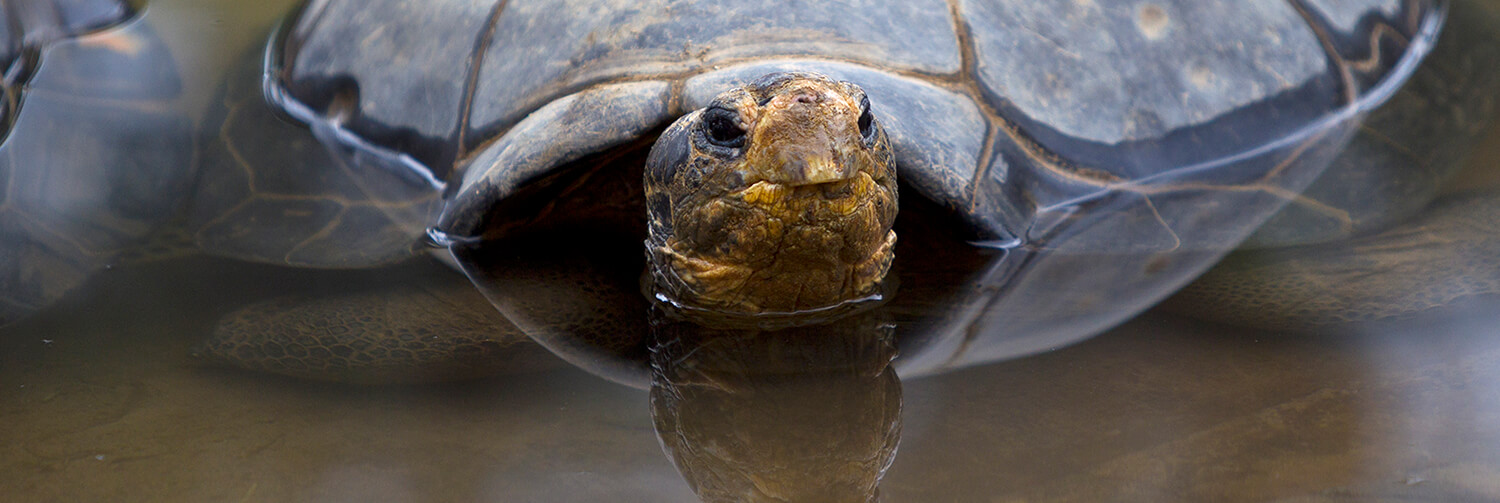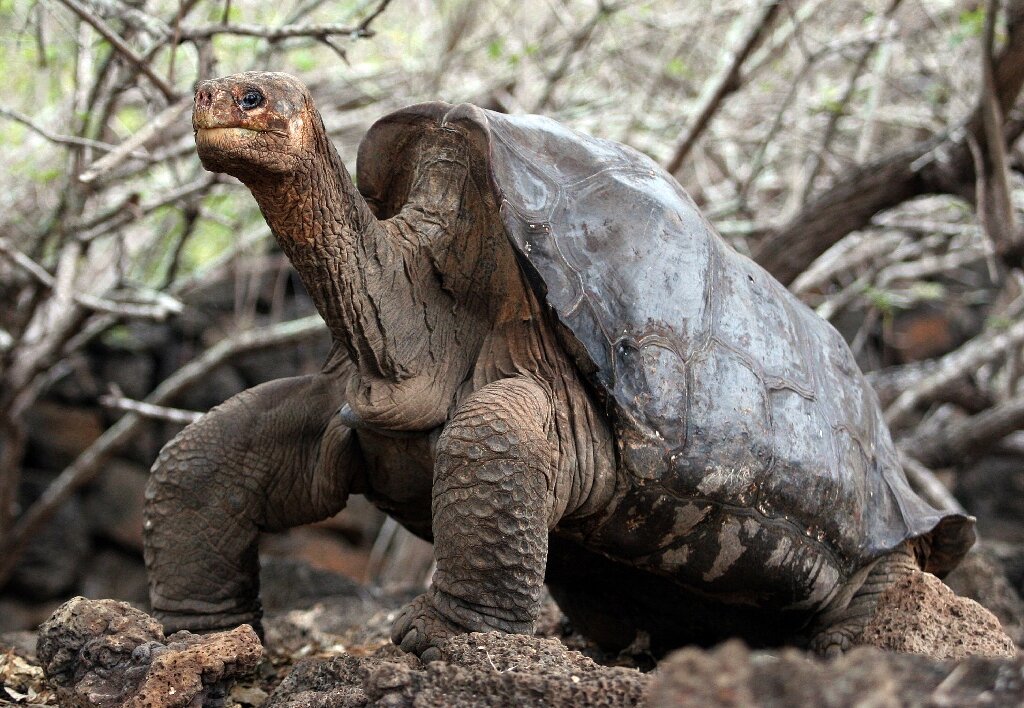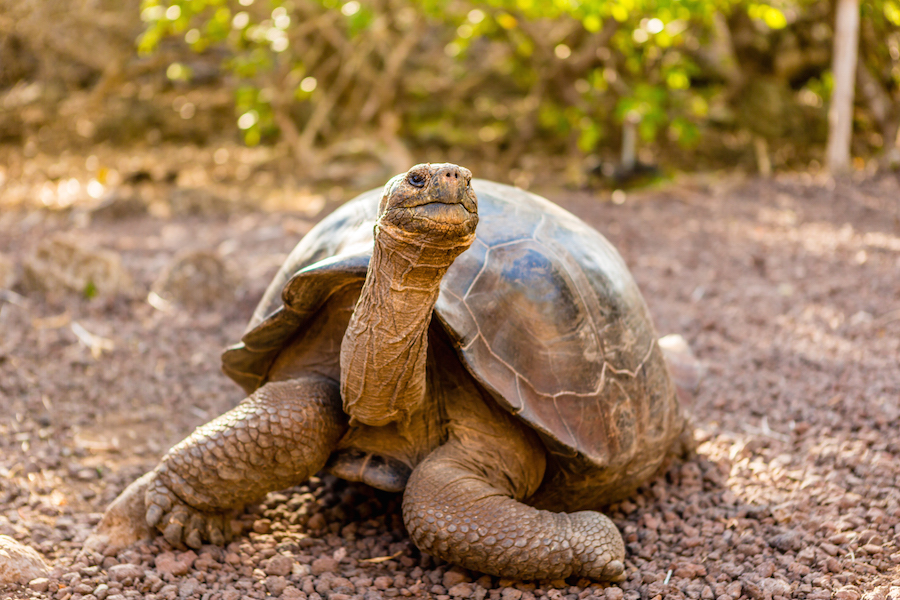STATUS
Vulnerable


Two centuries ago, the Galapagos Islands were home to more than 200,000 giant tortoises; today four species are extinct and only 10% of the original number remain. The rescue and eventual recovery of the tortoise populations has been slow and steady.
There are many subspecies of giant tortoises that are found on different islands and have different appearances. Those that live on the larger islands where there is more rain have "dome" shaped shells, while those that live in drier conditions are smaller tortoises and have a "saddleback" shell.
On June 24, 2012, the world-famous giant tortoise affectionately known as "Lonesome George" passed away. He was the last surviving land tortoise from Pinta Island, one of the northern islands in the Galápagos. Thought to be 100 years old, Lonesome George lived at the Charles Darwin Research Station since he was found in 1971. For more than three decades, the Galápagos National Park tried to save the Pinta subspecies by finding George a mate. Unfortunately they did not succeed. Sadly with Lonesome George's passing, there will be no more Pinta Island tortoises.

STATUS
Vulnerable

SCIENTIFIC NAME
Chelonoidis nigra

POPULATION
20,000-25,000

LENGTH
up to 4 feet long

WEIGHT
up to 700 pounds

HABITAT
GRASSLANDS
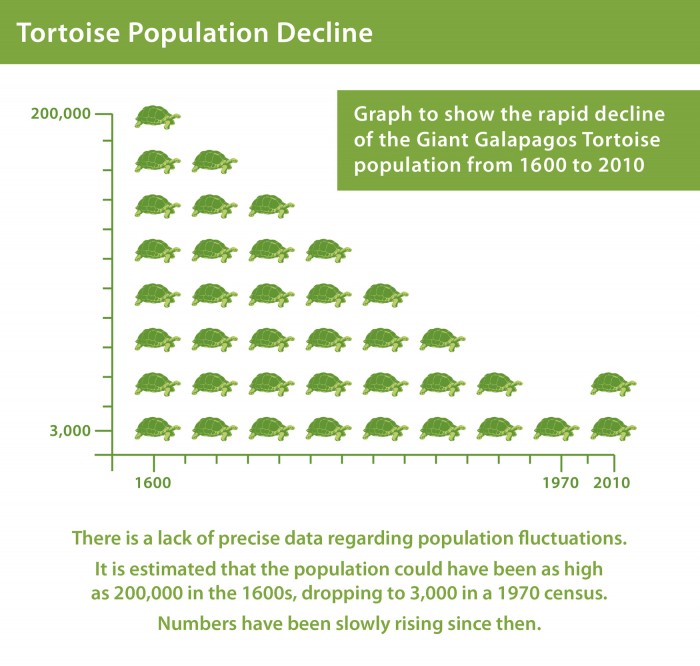
The giant tortoise is an iconic species from the Galápagos and is only found on these islands. They are the largest living tortoise in the world.
They lack teeth, but their jaws are lined with horny sharp ridges, which come together like a pair of pinking shears. Some types of turtles and tortoises will bite defensively, but these gentle creatures almost never will. However, if a person should misjudge while offering them food, a large tortoise could easily remove a finger.
It takes a giant tortoise about 20 years to reach breeding size. Male tortoises are generally much larger than females of the same species.
Their armor makes the larger specimens nearly invulnerable to attack by any of the creatures found in their homeland. If threatened, they quickly draw their heads in with a loud hiss and bring their plated front legs together. The tail is tucked in as additional defense.
"These gentle giants are strict vegetarians, there is no fat or cholesterol in their diets. They move incredibly slowly, and have no stress in their lives...they are completely docile, peaceful creatures.
